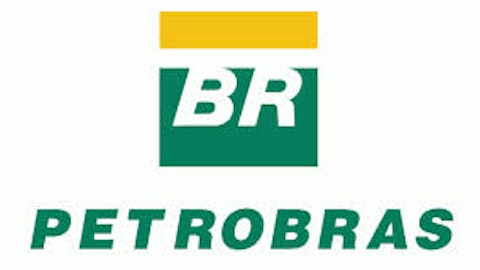
The inspiration for value analysis
Buying at a low price-to-earnings multiple should be a cakewalk, right? The difficulty with this is that lower price-to-earnings multiples tend to happen on the bottom of an economic cycle.
Morgan Housel states that it’s possible to buy stocks at a low price-to-earnings multiple, and net a pretty significant return based on the below chart.

Source: Motley Fool
Here’s the problem though with this graph. First, it talks about the average annual return following when a stock trades at a low price-to-earnings multiple. This means that you have to time the purchase of a stock when the pricing of it is cheap relative to its growth. The trick to this, however, is that it’s not very easy to pull off. Usually, you can find these cheap stocks when the stock market as a whole is at a discount.
An accurate representation of value investing
Furthermore, I went back and searched for stocks that have had a 0 to 10 price to earnings multiple (10-year average), and also generate 0% to 30% in annual net income growth over the past 10-years. I also included that the market capitalization had to be above $500 million. Below is a screen shot that depicts the results of my screen.

Source: Ycharts Screen & Data
After searching through 4,410 stocks, there were only 18 companies that consistently traded at a low-price-to-earnings multiple, and grew earnings at above average rates over the course of ten years. The list had a ten-year average price-to-earnings multiple of 6.51. Value investors in search of low price-to-earnings stocks would be using this as the primary screening criteria, so I had to include it. The list had a ten-year average annual net income growth rate of 12.51%. The growth rate surpasses the price-to-earnings multiple, which implies that the stocks on the list fall under the classification of “value.”
What makes this list different is that I made an apples-to-apples comparison. Rather than talking about the ten-years after a stock trades at a 10 price-to-earnings multiple. I took a close examination of an average of growth and earnings multiple over ten-years. Both variables had to average over ten-years, meaning that these stocks were trading at a value every year for ten-years. What’s nice about ten-year averages on price-to-earnings is that it lessens the impact on temporary accounting changes that result in inflated or deflated earnings — for example, Yahoo’s! sale of Alibaba.
What it largely indicates is that your odds of finding a long-term value investment is slim to none. Most of the time, stocks with a low price-to-earnings multiple do not generate growth rates above the price-to-earnings multiple. Your odds of success are 18/4,410 or .46% over the course of ten-years. The alternative is to buy a low price-to-earnings multiple stock near a market bottom (but timing market bottoms is a fools game).
Three names from the list that stuck out
The price performance of Annaly Capital Management, Inc. (NYSE:NLY), Compania de Minas Buenaventura SA (ADR) (NYSE:BVN), and Statoil ASA(ADR) (NYSE:STO) vary significantly over ten years.

Source: Ycharts
The three companies have been trading at a value every year for ten-years relative to net income growth. Also, if net income growth is greater than the earnings multiple, it can be assumed that shareholder equity has accumulated.
Two losers
Annaly Capital Management, Inc. (NYSE:NLY) primarily invests into mortgage backed securities. The company currently trades at a 7.1 price-to-earnings multiple. The problem with investing into the company is its sensitivity to interest rates (higher bond interest rates will lower investment yields). On the upside, it has a 13.56% dividend yield that can be compounded for reasonable earnings. The downside, however, is that the stock could depreciate, which is troublesome. Analysts on a consensus basis anticipate the company to decrease earnings by 4.3% per year over the next five years.
Compania de Minas Buenaventura SA (ADR) (NYSE:BVN) has always traded at a discount over ten-years relative to its historical net income growth. The reasoning was because the company was exposed to the price of gold. Gold and silver mine operators tend to be leveraged. When the price of a commodity reaches above break-even, each additional price increase has a significant impact on the net income of the company (the borrowing heavily impacts the performance).
Over the past ten-years, the company’s low price-to-earnings multiple was due to the risk associated with gold prices. What it means is that value investments in basic materials cannot be taken seriously. Analysts on a consensus basis expect this company to grow earnings by 6.6% per-year over the next five years. Falling rates of growth are a bad sign (the company averaged 20% growth in the past ten-years).
The winner
Statoil ASA(ADR) (NYSE:STO)’s performance metrics were the most consistent. Following the 2009 market crash the stock has not been able to fully recover. However, the reasoning for this can be reasonably explained as the company is based out of Norway. For all of you who are unfamiliar with Europe, Europe has been a disaster economic zone. Economic instability tends to depress stock prices, so the low price-to-earnings multiple can be justified.
Analysts expect Statoil ASA(ADR) (NYSE:STO) to report a 14.5% year-over-year decline in net income for the year. The company is expected to grow earnings by 0.4% in the next fiscal year. The decline in earnings growth is coming from falling production growth and Norwegian petroleum taxes. On the upside, Statoil pays a 5.25% dividend yield. The company also provides guidance that production volume should grow at a 2% to 3% compound annual growth rate until 2016.
Over the past 20 years, the price of Brent crude oil has increased by 500%. Assuming the production growth is accompanied by reasonable increases in the price of crude, Statoil ASA(ADR) (NYSE:STO) should be able to outperform.
Conclusion
Buying stocks that always trade at a value is difficult. What investors should look for is a very temporary difference in price relative to performance. Owning stocks that have a higher price-to-earnings multiple and lower rates of earnings growth can be seen as appropriate. The reasoning is that low price-to-earnings doesn’t always indicate a strong investment opportunity, even if the company has always been at a discount and generated net income growth consistently over ten-years.
Of the three opportunities, I closely examined. I believe that Statoil ASA(ADR) (NYSE:STO) has the most upside. The practicality of owning an oil play that trades at consistently low valuations seems pretty smart. The long-term growth thesis largely remains intact despite the short-term weaknesses due to taxation.
The article Value Investing Is Simple: Wrong! originally appeared on Fool.com and is written by Alexander Cho.
Alexander Cho has no position in any stocks mentioned. The Motley Fool recommends Statoil (ADR). Alexander is a member of The Motley Fool Blog Network — entries represent the personal opinion of the blogger and are not formally edited.
Copyright © 1995 – 2013 The Motley Fool, LLC. All rights reserved. The Motley Fool has a disclosure policy.





